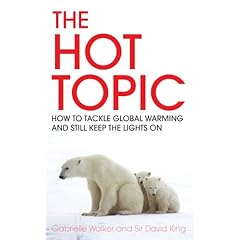Missing the obvious - why electricity is cheaper at night
I've just been reading David King's book again and realised something obvious. Electricity is cheaper at night because it is more efficient to produce it at night when the demand is flat.
Power companies have 2 kinds of turbine - base loaders and peakers.
Base loaders are turbines that run all the time at consistent RPM and are pretty efficient. We know that our cars are the most efficient when we drive at a steady 56mph, well, base loaders are like this. You can't turn these machines off at night and this energy needs to be used. You might not turn them off for years.
Peaking units operate more dynamically revving up or slowing down to met peaks in demand as they occur. In the old days, when we had 3 TV channels, electricity would peak during the advert break of big TV shows as the nation switched on their electric kettles. Now TV has so many channels I don't think these peaks are quite so consistent. Anyway, peaking units are now more common and, for various reasons, the way electricity is now traded is part of what caused it. These peaking units are less efficient in the same way that accelerating hard and braking hard in a car makes your fuel consumption horrible.
So, at night, the base loaders trundle on and demand is low and pretty flat and peakers aren't needed. You have to do something with this energy you're generating which is partly why electric companies offer special dual-pricing schemes to let people buy cheap electricity at night (it's 3 times cheaper for me).
Bottom line - run your washing machine and dish washer after 12.30 and before 7 am to save the planet. I've even started charging my laptop at night and using it from the battery during the day but that's not very successful yet.
PS With the washing machine, try washing at 30 degrees C - this uses 40% less energy than at 40 degrees C! You might also like to try using half the amount of soap recommended and see if it makes any difference - I can't tell the difference! Or even explore these eco balls which work for 1,000 washes.








